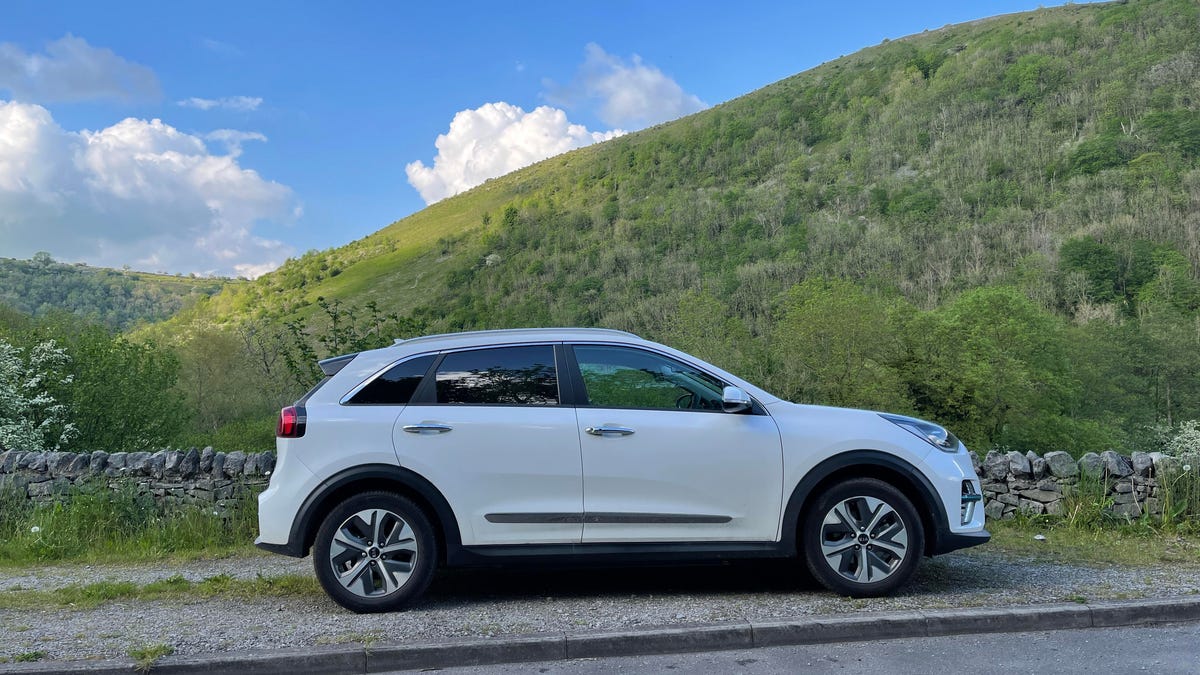How to own an electric car in a rented house
Here's how we've been living with our long-term Kia Niro EV without an EV charger at home.
With more and more electric car charging points popping up day by day, it's never been more convenient to own an EV. But those of us living in apartment complexes -- or in rented property where installing charging points isn't allowed -- continue to have the problem of figuring out how to keep an electric car charged.
I've been living with our excellent long-term Kia Niro EV in a rented flat in Edinburgh, Scotland. Over the past six months, I've come up with a variety of tips for EV ownership in rented accommodations.
Know your nearby charging points
Charging at home might not be an issue at all if you live in close proximity to a good selection of fast charging points. Instead of plugging in at home, you can simply leave it at a charging station up the road and then move it when it's full. Or perhaps you can find a fast charger along your usual commute where you can stop for 15 minutes every other day to give your car a boost.
I've been using Zap-Map here in the UK to scope out some of the chargers around Edinburgh and found a fast charger about 10 minutes away in a Shell gas station. Sure, it's not just around the corner, but it's close enough that I can zip the car up, plug it in and listen to a podcast for 20 minutes as it brings my range back up to 80%.
Keep in mind, though, that public charging points will typically charge you more per kilowatt than your home energy supplier, so you will pay slightly more to juice up your vehicle. Some providers will offer lower fees to members (or even subscription options that reduce the rates) so it's important to consider whether you can save on your recharges by signing up as a member, rather than simply using it as a guest each time.
Thanks to DC fast charging, keeping the Niro full of juice is a cinch.
Pick a car with good range
If you're yet to buy your EV of choice, then it's worth keeping in mind exactly how you'll charge it before splashing your cash. If you can charge either at home or somewhere very close by, then small city cars with lower range like the Mini Cooper SE (114 miles according to the EPA) will be perfectly fine.
However, if you have to go a little further afield, it's worth finding a car with a higher range so you don't have to make that trip to recharge quite as often. My loaner Kia Niro EV has a maximum range of 239 miles, so even after many local jaunts around town, and even to the nearby beach, I don't need to worry about recharging. It's only when I journey further into the wilds of Scotland that I'll need to plot a course via a charger on the way home.
Invest in a good extension cord
You don't need to install a dedicated EV charging wall box in order to boost up your car. Just plugging it into your standard household electricity outlet will do the trick -- albeit much, much slower. Unless your property has an outdoor outlet near your parking spot, you'll need to invest in a good extension cord. Don't go cheap here; remember that you're putting a lot of power through this cord, so make sure it has surge and heat protection built in.
The downside is that the energy output is a lot lower, so it'll take many, many hours to refill your car from a standard home socket than from a dedicated EV charging station. But it's still better than nothing, and I've found this to be a great solution in my rented accommodation, as I can park right outside the front door and feed the extension cord in through my mail slot to a power outlet inside the house.
I caught up on some photo editing on my iPad while waiting for the car to charge.
Always plan ahead
A little planning goes a long way. My advice is to always recharge at the end of one trip, rather than just before the next. That way, you're always ready to go and won't need to worry about adding on an extra 30 minutes to your journey, particularly if you're already in a hurry.
Sure, sometimes you just want to get home after a long day out. Maybe you're bursting for the toilet or there's a TV show starting you really want to catch, but if you're already driving past that charging point on your way back home, is it really that inconvenient to give it even a quick boost now, rather than regretting it later?
Don't let your range drop too much
Maybe it is safe to drive on past and head straight home to a comfy chair and a beer. But only if you're confident you have enough range available to at least get you to a charging point. I personally never like letting my range drop below 50 miles. Sure, that's way more range than I need to get to any of my local chargers, but it means I'm always ready to go and if I have to unexpectedly nip out to the shop I don't need to worry about grinding to a halt on the way.
This is particularly important if you only have one nearby charging point; what if it's out of order when you arrive? Do you have enough range to get you to another one further away? It's just safe practice to always have a bit of juice left in the tank.
Keep following along as I explore all these options over the course of my time with the Kia Niro EV.


